#nova keeps petra centered
Explore tagged Tumblr posts
Photo


the green eyes yeah, the spotlight shines upon you and how could anybody deny you?
poses by @gunthermunch
#“honey you are a rock upon which i stand”#been listening to coldplay a lot recently#i felt like this song fit them#nova keeps petra centered#yes i am still playing around with reshade presets#im actually really happy with this one#mine#my sims#my sim#petra grevinski#nova grevinski-reid#celebrity status#I FIGURED OUT SMALL TEXT THANKSGOOGLE#also thank u gunthermunch for such cute infant poses <3#thanks to all cc creators <33
11 notes
·
View notes
Text
Meet the Fireteam!
A series of introductions to the members of Fireteam: Cherry Bomb! (Sorry for the low-quality images, I did my best)

First up is Kindle, an Awoken Nightstalker and de facto leader of the Fireteam. She has the most experience in the field out of this team. She doesn’t actually understand why she was entrusted with showing two kinderguardians the ropes when she’s kind of a mess herself and doesn’t actually know what she’s doing most of the time. She’s recently started working with and training two other new guardians and is the baby of a Fireteam she was on when she was first rezzed and still runs with from time to time.
Overall, Kindle is a disaster of a human being with a thin veneer of having her shit together. When she’s not with a Fireteam, she tends to approach missions by going in the general direction her ghost, Matchstick (Match for short), tells her to, shooting wildly until everything in her general vicinity is dead, and improvising as she goes, breaking out the rocket launchers when shit goes really south.
With her Fireteam, she’s more of a calming influence. She tends to opt for a middle ground between Lyra’s “slowly and methodically kill enemies from a distance” strategy and Nova-8’s tendency to rush in blind and fuck shit up at close range. They exhaust her a little bit she loves them anyway.
Kindle is fairly introspective and enjoys finding ways to improve and enjoy herself outside of combat. She took up art at one point and loves drawing and painting landscapes of the places she’s been around the system. Io and Nessus were her two favorite places for a long time. She thinks the Dreaming City is beautiful and finds the Tangled Shore aesthetically pleasing, but hasn’t had the chance to draw anything from those spots yet.
Cayde-6 was a mentor and the first person she met when she arrived at the Tower after being rezzed. His death hit her really hard. After hunting down Uldren and his barons, she avoided the City and the Tower for a while. She threw herself into helping Petra attempt to maintain order in the Dreaming City, learning the history and secrets of the Awoken, patrolling the Tangled Shore, and hunting down escapees from the Prison of Elders.
She needed time to grieve and process what happened and determine what being a Guardian meant to her. Now, she’s back in the Tower, running strikes, working with her Fireteam and dedicated to serving and protecting the City.

Next up is Lyra, an Awoken Voidwalker and resident goth. She was first rezzed at the start of the Taken War and spent a lot of time fighting the Taken in the Cosmodrome and on Venus as a result. During that time, she decided to dedicate herself to a very...particular aesthetic.
She’s definitely more fashion-conscious when it comes to her gear than her fellow Fireteam members. She’s been known to turn her nose up at gear she finds ugly and spends exorbitant amounts of resources infusing gear that she likes so she can keep wearing it. She once spent a stupid amount of bright dust on new shaders from Tess. While she generally is okay with Kindle’s fashion choices, she despises how much Nova loves bright colors like pink and green and chrome. She prefers black and white with touches of gold or red.
Lyra is much less impulsive and less prone to rushing in than her fellow Fireteam members and could be the voice of reason as a result. Unfortunately, she is deeply sarcastic and a little bitchy, preferring to convey her displeasure through judgemental stares and haughty silences instead of through words (much to the chagrin of her Ghost, Penumbra). Kindle and Nova have a lot of practice ignoring these (much to the chagrin of Lyra).
She does genuinely care for her Fireteam, though she rarely admits it out loud. She isn’t the best at making friends herself. She’s introverted and a little solitary by nature, preferring reading over socializing. She is often dragged out of her research by the other two members of her Fireteam to get some fresh air or go on a mission. Her observant nature makes her a very thoughtful gift giver though, as she often knows exactly what to get people.
Lyra idolizes Ikora, and her judgemental silences turn much more awed in her presence. Working with her to fight Panoptes and the Vex threat on Mercury was a dream come true. While she found Cayde to be a bad influence and far too prone to goofing off, she was genuinely upset by his death, especially seeing how badly it hurt Ikora and Kindle.
Following Cayde’s death and Kindle withdrawing into herself, she did her best to support her friends and acted as the centering force for her Fireteam. She gave Kindle the time and space she needed while not letting her drift out of contact completely, and offered her support to Ikora in her own awkward and reticent way.
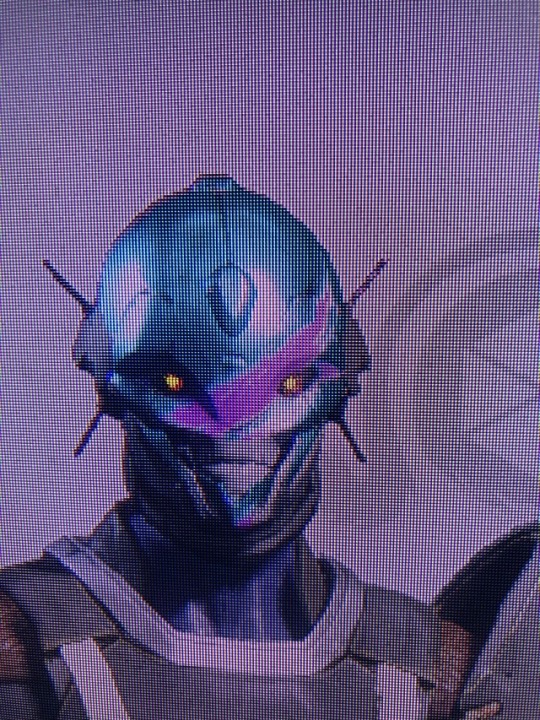
Finally, there’s Nova-8, an Exo Striker and the baby of Fireteam Cherry Bomb. Nova was first rezzed at the end of the Taken War, making her the youngest, and it shows in many ways. She doesn’t have the same experience with system-wide threats, and in general is much more cheerful and optimistic than the other two members of her Fireteam.
Nova generally maintains a very sunshiney demeanor, easily making friends and finding lots of things to be positive about. Some of this is done on purpose; she makes a concerted effort to be as peppy as possible just to irritate Lyra. Similarly, some of her dedication to making her armor bright happy colors is because she knows it clashes with her teammate’s style sensibilities. Occasionally, she’ll play up her naïveté to get a reaction. As a whole though, she is genuinely cheerful and sweet, especially to her many friends.
When it comes to battle though, she’s an absolute monster. She loves getting as close to the action as possible. Her preferred strategy is “get in and cause as much chaos and damage as possible.” Her Ghost, Molotov, wholeheartedly endorses this approach. She spent a lot more time training in the Crucible than the other two due to how much it allowed her to indulge in this taste for destruction. She enjoys invading in Gambit for similar reasons, but something about the game rubs at her, so she doesn’t take part in it as often as the other two members of her Fireteam do.
When she’s not fucking shit up on missions with friends, fucking shit up in the Crucible, or training to fuck shit up, Nova enjoys strolling through the Tower and the City and even the Farm talking and spending time with people. Every time she’s on Earth, she does her very best to pop by the City and the Farm and make rounds greeting everyone there. She loves making time to hang out and do something with everyone when she can get away with it, and at least a brief chat with everyone when she can’t.
Due to her time in the Crucible and their similarities in personality, Nova thinks Shaxx is the coolest person ever and they get on like a house on fire. Lord Saladin is less prone to indulging her taste for wanton destruction, but she still thinks he’s pretty cool. She’s friendly with Zavala but thinks he’s a bit of a killjoy. Cayde was her favorite out of the Vanguard when he was alive, and she misses his humor quite a bit.
The Red War was the first real threat Nova faced and her first real brush with death. It sobered her slightly, but she came out of it just as cheerful as before. After Cayde died, she found it much harder than before. Still, she does her best to keep things positive for her friends. She put a lot of effort into trying to cheer people up in any way she could, especially holidays like Festival of the Lost, the Dawning, and Crimson Days.
#destiny#destiny 2#fireteam cherry bomb#fireteam: cherry bomb#kindle#lyra#nova-8#destiny ocs#awoken#exo#hunter#warlock#titan
2 notes
·
View notes
Photo
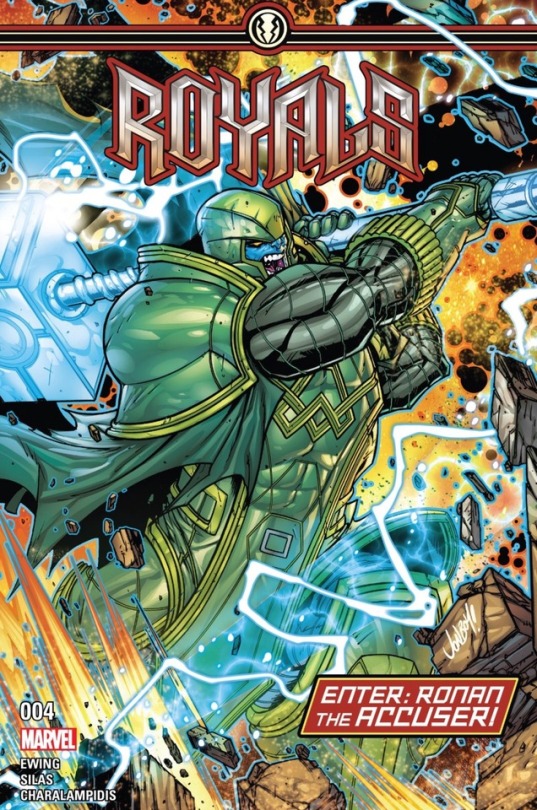
The Royals #4 Review
spoilers spoilers spoilers spoilers spoilers spoilers spoilers spoilers spoilers
After a thoroughly mind-bending third issue, Ewing, Silas and Charalampidis et al. offers up a shorter, more straightforward adventure entailing the Royals' return to the former Kree throne-world of Hala and the very much changed Ronan the Accuser who awaits them. Full recap and review following the jump.
Once more the issues starts off with a cryptic prologue set thousands of years in the future. The last Inhuman (whom we now know to be Maximus) looks over a battered and altered world (which we now know to be Earth). A sickly giant riding atop a mutant pterodactyl ferries Maximus toward an alien vessel. The narration mysteriously indicates that the last Inhuman is on his way to meet 'the accuser.'

The scene shifts to the present and the scorched, deadened world of Hala. The former capital planet of the Kree Empire had been attacked and laid barren by The Slaughter Lords during the Black Vortex story-arc (a cross-over that ran through the pages of Captain Marvel, Nova, All New X-Men and Guardians of The Galaxy a while's back). Ronan himself was greatly empowered by the celestial energies of The Black Vortex, yet he was ultimately helpless to prevent Planet Hala's demise.

Alone and besieged by grief, Ronan now spends his days walking amidst the smoldering ruins of Hala. His solemn task to roam the immolated world and recall the names of the countless dead. His solitary vigil is interrupted as his heightened senses detects the approach of The Inhuman vessel, The Asterion.
Aboard the Asterion, Captain Swain is tasked with plotting a landing trajectory whilst also putting up with the near constant nattering and insults offered up by Maximus. Swain has little choice but to keep Max in the cockpit with her, the nature of the two Inhumans' powers act to cancel each other out, mitigating the threat posed by the treacherous Maximus.

Of course this is all much to the consternation of Gorgon, who would much prefer Max locked in the brig (or better yet jettisoned out an airlock). Maximus is quite happy to offer Gorgon an acerbic retort, stating that their mission is a scientific one with little use for a muscle-brained enforcer with a bad back.
Their spiteful patter is interrupted by a proximity alarm and Swain's announcement that the allegedly dead world of Hala has fired an attack. Evasive maneuvers prove fruitless as Ronan comes hurdling into orbit and uses his hammer to tear through the starboard wing of the craft, causing catastrophic damage to the Asterion.

For a brief instant Swain mistakes Ronan's hammer for that belonging to Thor, wondering allowed whatever it may have been that elicited the wraith of the god of thunder.
The damage to the ship has taken out the escape pods and the ship and its crew barrel toward the surface at what will surely be a terminal velocity. Marvel Boy, Crystal and Flint dash into the control bay, yet there seems to be little anyone can do to save them.
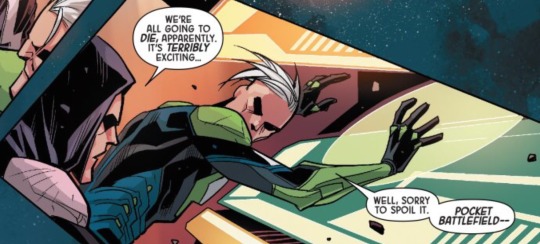
Confident he has the solution, Marvel Boy utilizes an advanced tool derived from the alternate technology of his home reality. It's called the 'pocket battlefield.'
This difficult-to-describe weapon first showed up in the pages of the original Marvel Boy miniseries; and then once more in the miniseries, Civil War: Young Avengers/Runaways. Fastened into the circuitry of his wristband, the pocket battlefield allows Noh-Varr to extend a spherical field around him and anyone in his vicinity; within this sphere, Noh can control and manipulate the properties of time, gravity and inertia. The effects only last a matter of moments, but it is long enough to enable The crew to survive the turbulent crash of the Asterion completely unscathed.
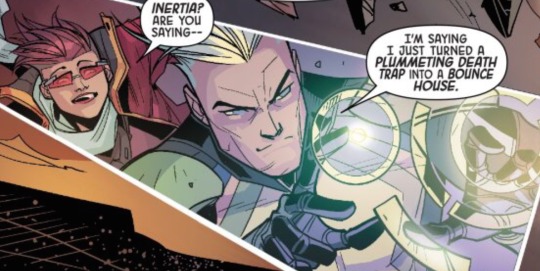
Armed with laser rifles, Medusa leads the squad from the wreckage of the ship, ready to take on whatever foe had fallen their ship. They discover that this adversary is their one-time ally and the former husband of Princess Crystal, Ronan the Accuser. Yet it is a very different version of Ronan. His transformation via passage through the Black Vortex has remade him into a veritable giant, possessing a host of new, formidable and mysterious powers.
Ronan is displeased to see The Royals. Not only are they trespassing on the sacred memorial of the dead planet Hala, but Ronan holds the Inhumans as in-part responsible for the fate that had befallen his home-world.
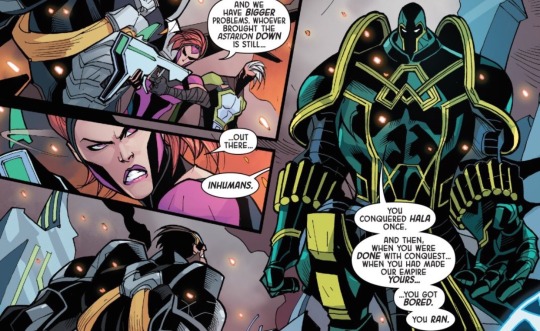
Following the War of Kings event, The Inhumans of Attilan had been granted lordship over the war torn remnants of the Kree Empire. Black Bolt ultimately relinquished Inhuman dominion over the Kree as part of a pact with The Supreme Intelligence... and yet The Supreme Intelligence is now dead and Ronan accuses The Inhumans of growing bored with their responsibilities to The Kree, abandoning them to their fate and just as guilty and culpable for Hala's fate as those who had destroyed it.
Ronan's claims are baseless, clearly warped by his anger and grief. Crystal, his one time love and wife tries to reason with him, but it is of no avail. Gorgon losses his patience and attacks, yet he is ill prepared for Ronan's impressive new abilities.
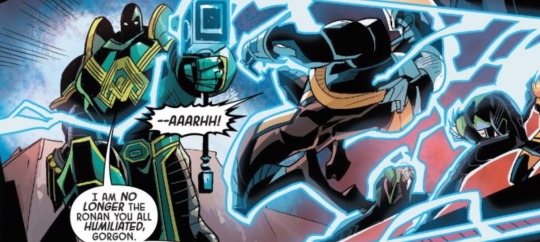
Ronan strikes down his hammer and a mysterious energy exude by from it, seizing each of The Royals in their tracks. The energy appears to place its victims in some sort of trance where they are engulfed by hallucinations centered on feeling of intense guilt over past actions and feelings... each drawn psychically from their memories and imaginations.
Gorgon's hallucinogenic experience is shown first and foremost; it’s a scene that introduces readers to his beforehand-unknown wife, a horned Inhuman named Myrra.
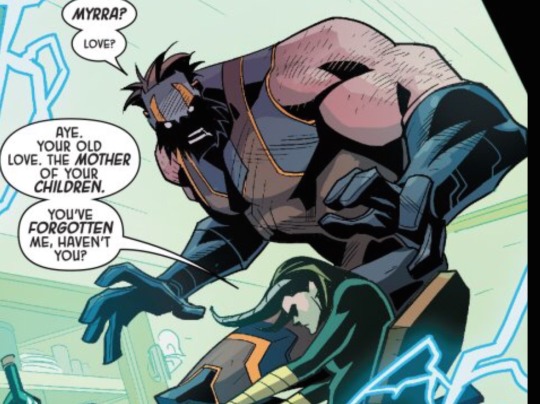
Writer, Al Ewing had hinted that Gorgon was going to be revealed as a widower, but here it is confirmed, with the additional tidbit that she is the mother of both their children (both the older adolescent, Alecto, as well as her younger brother Petras). This suggests that Myrra died sometime shortly before or right after Attilan's relocation to the Blue Area of the moon; although the circumstances of her death are left unrevealed. Within Gorgon trance, Myrra berates him for having forgotten about her, for finding comfort and distraction in his love for another.
The others experience similar hallucinogenic trances, each focused upon feelings of guilt, accusation and betrayal.
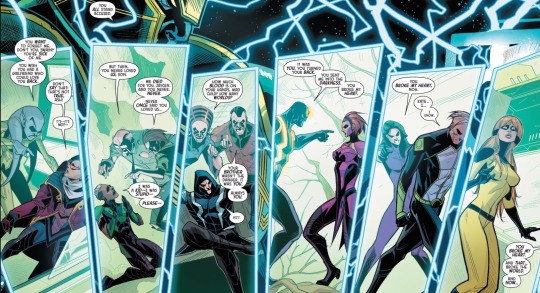
Swain sees Panacea, accusing her of wishing for a girlfriend more able to reciprocate her feelings of affection in a traditional fashion. Flint sees his adoptive parents condemning him for his negligence over never saying that he loved them. Maximus sees his parents accusing him of his various malicious schemes; stating that it was him not his brother whom they should have been worried over (Max seems utterly unfazed by the matter). Noh-Varr sees Kate Bishop, haranguing him for having broken her heart. And Medusa sees Black Bolt who accuses her of betraying him, sending him into the blackness and breaking his heart.
And finally there is Crystal. She is not effected like the others. She is left to speak more privately with Ronan. He accuses her of leaving him, of turning her back on true love. And the issue ends with Ronan demanding to know how she pleads to this accusation.
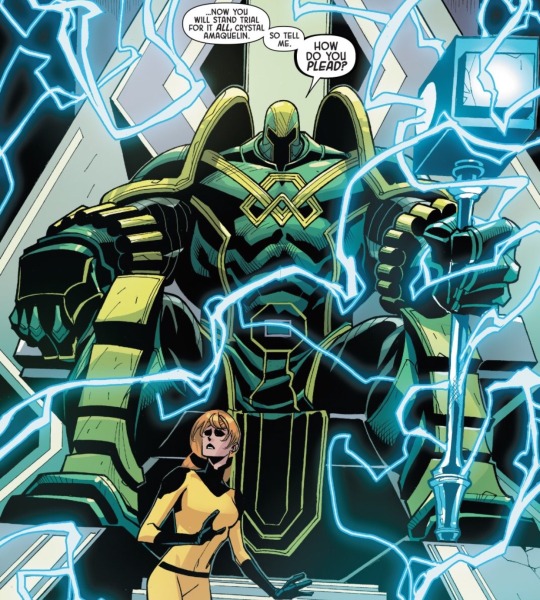
A very fun issue and truly my only complaint is just how short it was. Although granted the matter is likely influenced by my near-insatiable hunger to see more of where Ewing and company is going. Understanding the full context of the story sort of requires one to be fairly well versed on events that occurred in both the Black Vortex cross-over as well as parts of J. Hickman’s run on Fantastic Four. This was no problem for me, but I can imagine that other readers might have been a bit puzzled over who Ronan is, his connection to the Inhumans and how Hala was destroyed.
Al Ewing is clearly having a lot of fun writing Maximus and it shows. Max gets all the fun and funniest pieces of dialogue. This is great, but it does detract a bit from the continued character development of the other players. I have been hoping that these chapters would more focus on Crystal, who has thus far been the least utilized member of the cast. Bringing back Noh-Varr’s pocket battlefield was super cool, but there’s no reason why it couldn’t have been Crystal who stepped up and saved the others when The Astern was crashing. The cover for next issue (wonderfully illustrated by Kris Anka) focuses on Marvel Boy and while it’s a great cover, it leaves me further worried that Crystal will continue to take a back seat int he narrative despite the fact that her past relationship with Ronan should place her front and center in the plot. I suppose we will have to wait and see how it all pans out.
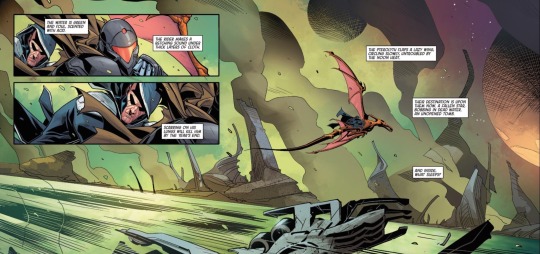
Silas and Charalampidis do terrific work on the art. Silas particularly excels at larger scenes, such as Ronan standing before the Royals and his initial attack on The Asterian. A touch less so in terms of facial expressions and I’m not a huge fan of the use of accentuated shadow covering much of the characters’ faces (particularly their eye-sockets. My sense is that Ewing wrote this script with Jonboy Meyer’s art style very much in mind and Thony Silas as had to accommodate his own style to fit. Yet this is totally speculation on my part.
some interesting side notes:
How neat to see Gorgon’s wife. His being a widower is a completely new wrinkle to his character. Not necessarily a retcon, but an addition that reframes much of his past behaviors in a new context. Many past tales have shown Gorgon as a hedonist, always on the look out for good time, lots to drink and sexual companionship. Perhaps all of these behaviors were less about him just wanting to have fun and more about him desperately searching out distraction to keep him from dwelling on the pain and sorrow of having lost his wife.
In that scene, Myrra accuses Gorgon of having fallen in love with another. This is all just a hallucination, but to whom might Myrra be referring to here? Is she talking about Gorgon’s affair with Mynxi (the two had a relationship in the pages of Inhumans: By Right of Birth) or is she referring to something else. Of late, it seems that Gorgon has been quite dutiful and attentive of Medusa. Is it possible he has fallen in love with his cousin’s former wife?
The hallucinatory visage between Swain and Panacea is the first time where the two are officially connoted as girlfriends. The matter has been rather obviously implied, but sometimes a fully unambiguous canonization is needed for naysayers. Ash’s accusing Swain of wishing she could more conventionally express her feelings of love may rub some the wrong way. It suggests that those in relationships with people who are neuroatypical may wish their partners could be more ‘normal.’ I don’t feel this is the intention. I believe Swain truly loves Ash for who she is, but a certain degree of ambivalence is bound to exist in any relationship and I’m certain a part of Swain does long for Ash to be able to say ‘I love you’ in a more conventional fashion.
It’s a bit of a stretch to say that Noh-Varr broke Kate Bishop’s heart. I think she was saddened when he ended their relationship, but not really heart-broken. Perhaps this is just how Noh sees it; or perhaps the thematic of a broken heart is being superimposed by Ronan.
In the Black Vortex cross-over, Hala was destroyed at the behest of Mr. Knife, who was secretly J’son of Spartex (Peter Quill/Star Lord’s father). J’son paid for this crime at the end of the story, but apparently Ronan’s thirst for vengeance is far from quenched, leaving him to add blame to The Royal Inhumans.
Being the Captain Marvel fan-girl that she is, I’m kind of surprised that Swain didn’t recognize Ronan’s hammer right off the bat.
The title of the chapter is ‘Dust and Roses.’ This is not the name of a David Bowie song but rather a lyric from Bowie’s ‘Big Brother’ from Demon Dogs. It’s an interesting choice, more so in the context of the full stanza of the song…
“Don't talk of dust and roses Or should we powder our noses? Don't live for last year's capers Give me steel, give me steel, Give me pulses unreal.”
The ways in which the future-oriented prologues and the main story connect appears to be rapidly coming to ahead. Yet the matter of how exactly they relate remains completely mysterious.
Definitely recommended. Three out of Five Lockjaws.

11 notes
·
View notes
Link
Here's a list of the various federal agencies reportedly on the chopping block, along with some of their key initiatives - and some of the jobs supported.
Corporation for Public Broadcasting Budget: $445 million Cost per American: $1.37 Republicans have long been known to want to kill government funding for Big Bird. But the CPB is much more than Sesame Street, and taking away public funding may imperil important stories that need to be told. For instance, the CPB is backing a program through Wisconsin Public Television called Veterans Coming Home - which includes a series depicting what some of the 2.5 million veterans endure as they reenter society, but also funds services, such as job fairs, for returning vets.
National Endowment for the Arts Budget: $150 million Cost per American: $0.46 The NEA supports art, and those who make it, across the country. Eliminating funding would kill hundreds of programs, like Art 365, which grants five Oklahoma artists $12,000 to support their work. Past grantees photographed remote portions of our National Parks and wilderness areas, and used aerial photography to look at churchgoing demographics in Oklahoma.
National Endowment for the Humanities Budget: $150 million Cost per American: $0.46 The NEH offers research funding to institutions like museums, colleges, and libraries. The agency has backed 16 Pulitzer winners and Ken Burns' The Civil War series, among other notable endeavors. One recent grantee is Michael Bernath, an associate professor at the University of Miami, who received $6,000 for his project In a Land of Strangers: Northern Teachers in the Old South and the Emergence of American Sectional Identity, 1790-1865.
Minority Business Development Agency Budget: $36 million Cost per American: $0.11 This federal agency helps minority-owned businesses with the capital, contracts, and markets they need to grow, according to its website. The agency also advocates and promotes minority-owned business with elected officials, policy makers, and business leaders. The MBDA says it helped a minority-owned construction company in Phoenix, for instance, secure $60 million in loans - which allowed the company to expand operations and hire more employees.
Economic Development Administration Budget: $215 million Cost per American: $0.66 The EDA supports distressed communities with their infrastructure needs that will help drive regional growth, promotes economic development projects that spur entrepreneurship and innovation at the regional level, and provides direct technical assistance to firms negatively impacted by global trade. What does this mean? Seven years ago, the EDA gave a $2 million grant to the Pacific Northwest Diabetes Institute to buy new scientific equipment, in turn providing lab space that would support other high-tech companies in the area. The EDA says the grant ended up creating 184 jobs, saving another 110, and attracting another $500,000 in private investment.
International Trade Administration Budget: $521 million Cost per American: $1.60 The ITA helps American businesses sell more products to overseas markets. One beneficiary was the Iron Fist Brewing Company, located in Vista, California. A representative of the San Diego U.S. Export Assistance Center connected with the brewery at a convention in 2013, and helped them export to Australia, Canada, Finland, Hong Kong, among others. Iron Fist hired two more employees thanks to new export revenue, the ITA reports.
Manufacturing Extension Partnership Budget: $142 million Cost per American: $0.43 This is a so-called public-private partnership that helps small to medium-size manufacturers become more efficient, build new products, and improve sales and marketing techniques. Missoula, Mont.-based organic soap wholesaler Botanie used their local MEP affiliate to help keep pace with their growing business - by, for instance, using more sophisticated technologies to track inventory. The MEP says it helped Botanie save $280,000 and retain six jobs.
Office of Community Oriented Policing Services Budget: $286 million Cost per American: $0.88 The majority of COPS' annual budget is dedicated to hiring more police personnel to help local communities improve their policing. Last October, the Justice Department announced $119 million in grant funding for 184 law enforcement agencies across the country - resulting in 900 created or saved jobs, the office reports. Among the recipients was the Dallas Police Department, which had lost five officers in an ambush a few months earlier; it got $3.1 million to hire 25 officers. Office of Violence Against Women Budget: $480 million Cost per American: $1.48 The OVW runs 25 grant programs created through the 1994 Violence Against Women Act, in an effort to reduce domestic violence, sexual assault and dating violence. The police department and city government of Andalusia, Ala., for instance, received a $450,000 grant over three years that will cover domestic violence training for officers as well as the hiring of three additional police officers.
Legal Services Corporation Budget: $503 million Cost per American: $1.55 The LSC helps poor Americans afford legal services, currently funding 134 independent legal aid organizations with more than 800 offices in the U.S. For instance, the Atlanta Legal Aid Society - which served nearly 33,000 people in 2015, including about 15,000 children - received $3.8 million last year, supporting 109 positions. Two-thirds of clients served were African-Americans. Civil Rights Division of the Justice Department Budget: $156 million Cost per American: $0.48 The Civil Rights Division, a part of the Justice Department that employs 750 positions, works to fight discrimination and protect Americans' voting rights. Recently a Civil Rights Division investigation of the Chicago Police Department found that CPD officers' practices unnecessarily endanger themselves and result in unnecessary and avoidable uses of force. The city of Chicago and the Justice Department reached an agreement to improve the city's policing practices.
Environment and Natural Resources Division of the Justice Department Budget: $123 million Cost per American: $0.38 The ENRD brings cases against those who break pollution-related laws. In one recent case, the division levied a $160,000 penalty against Iowa's Meadowvale Dairy for violating the Clean Water Act.
Overseas Private Investment Corporation Budget: Self-sustaining Cost per American: $0 Using both loans and loan guarantees, OPIC works to help businesses with annual revenues below $400 million invest in large scale operations, such as airports and water systems. Over the past five years, 71 percent of OPIC projects were in partnership with U.S. small businesses, accounting for over $600 million annually in U.S. exports, according to the State Department. One recent OPIC effort, for instance, provided an $87 million, 17-year loan, to a U.S. company, Al Tamweel Al Saree, to extend loans to micro and small-sized Iraqi businesses.
UN Intergovernmental Panel on Climate Change U.S. Funding: Estimated $10 million Cost per American: $0.03 The IPCC issues reports from the world's leading climate scientists on the state of global warming, and its impact on human populations. According to NASA, 2016 was the hottest year on record.
Office of Electricity Deliverability and Energy Reliability Budget: $262 million Cost per American: $0.81 Created after the 2003 blackout left nearly 50 million Americans and Canadians without power, the OE invests in the electric grid to make it more modern, reliable and secure. The agency recently released a comprehensive report on how America can improve energy allocation.
Office of Energy Efficiency and Renewable Energy Budget: $2.9 billion Cost per American: $8.95 The EERE works to create and sustain American leadership in the transition to a global clean energy economy. What does that look like? In one recent demonstration project, the EERE helped a South Carolina-based BMW plant use bio-methane gas from a nearby landfill to power some forklifts.
Office of Fossil Energy Budget: $878 million Cost per American: $2.71 With projects like the development of clean coal technology, this office works to reduce the carbon footprint of fossil fuels. Its Petra Nova project, based in Thompsons, Texas, is now the world's largest post-combustion carbon-capture system. Petra Nova received $190 million from the Department of Energy, and has the potential to capture 1.6 million tons of CO2 per year from an existing coal-fired power plant.
0 notes
Link
trump Wants to Kill These 17 Federal Agencies and Programs. Here's What They Actually Cost (and Do)
To put this in context: The total cost, per American, of the following 17 programs said to be on the chopping block is $22.36 per year-- of which more than a third comes from a single clean-energy program. By contrast, housing subsidies, like the mortgage interest deduction, which are disproportionately used by the wealthy, cost $296.29 per American.
Here's a list of the various federal agencies reportedly on the chopping block, along with some of their key initiatives -- and some of the jobs supported.
Corporation for Public Broadcasting
Budget: $445 million
Cost per American: $1.37
Republicans have long been known to want to kill government funding for Big Bird. But the CPB is more than Sesame Street.
For instance, the CPB is backing a program through Wisconsin Public Television called "Veterans Coming Home" -- which includes a series depicting what some of the 2.5 million veterans endure as they reenter society, but also funds services, such as job fairs, for returning vets.
National Endowment for the Arts
Budget: $150 million
Cost per American: $0.46
The NEA supports art, and those who make it, across the country. Eliminating funding would kill hundreds of programs, like Art 365, which grants five Oklahoma artists $12,000 to support their work. Past grantees photographed "remote portions of our National Parks and wilderness areas," and used aerial photography to look at churchgoing demographics in Oklahoma.
National Endowment for the Humanities
Budget: $150 million
Cost per American: $0.46
The NEH offers research funding to institutions like museums, colleges, and libraries. The agency has backed 16 Pulitzer winners and Ken Burns' The Civil War series, among other notable endeavors. One recent grantee is Michael Bernath, an associate professor at the University of Miami, who received $6,000 for his project "In a Land of Strangers: Northern Teachers in the Old South and the Emergence of American Sectional Identity, 1790-1865."
Minority Business Development Agency
Budget: $36 million
Cost per American: $0.11
This federal agency helps minority-owned businesses "with the capital, contracts, and markets they need to grow," according to its website. The agency also advocates and promotes "minority-owned business with elected officials, policy makers, and business leaders."
The MBDA says it helped a minority-owned construction company in Phoenix, for instance, secure $60 million in loans -- which allowed the company to expand operations and hire more employees.
Economic Development Administration
Budget: $215 million
Cost per American: $0.66
The EDA supports "distressed communities with their infrastructure needs that will help drive regional growth," promotes "economic development projects that spur entrepreneurship and innovation at the regional level," and "provides direct technical assistance to firms negatively impacted by global trade."
What does this mean? Seven years ago, the EDA gave a $2 million grant to the Pacific Northwest Diabetes Institute to buy new scientific equipment, in turn providing lab space that would support other high-tech companies in the area. The EDA says the grant ended up creating 184 jobs, saving another 110, and attracting another $500,000 in private investment.
International Trade Administration
Budget: $521 million
Cost per American: $1.60
The ITA helps American businesses sell more products to overseas markets. One beneficiary was the Iron Fist Brewing Company, located in Vista, California. A representative of the San Diego U.S. Export Assistance Center connected with the brewery at a convention in 2013, and helped them export to Australia, Canada, Finland, Hong Kong, among others. Iron Fist hired two more employees thanks to new export revenue, the ITA reports.
Manufacturing Extension Partnership
Budget: $142 million
Cost per American: $0.43
This is a so-called public-private partnership that helps small to medium-size manufacturers become more efficient, build new products, and improve sales and marketing techniques. Missoula, Mont.-based organic soap wholesaler Botanie used their local MEP affiliate to help keep pace with their growing business -- by, for instance, using more sophisticated technologies to track inventory. The MEP says it helped Botanie save $280,000 and retain six jobs.
Office of Community Oriented Policing Services
Budget: $286 million
Cost per American: $0.88
The majority of COPS' annual budget is dedicated to hiring more police personnel to help local communities improve their policing. Last October, the Justice Department announced $119 million in grant funding for 184 law enforcement agencies across the country -- resulting in 900 created or saved jobs, the office reports. Among the recipients was the Dallas Police Department, which had lost five officers in an ambush a few months earlier; it got $3.1 million to hire 25 officers.
Office of Violence Against Women
Budget: $480 million
Cost per American: $1.48
The OVW runs 25 grant programs created through the 1994 Violence Against Women Act, in an effort to reduce domestic violence, sexual assault and dating violence. The police department and city government of Andalusia, Ala., for instance, received a $450,000 grant over three years that will cover domestic violence training for officers as well as the hiring of three additional police officers.
Legal Services Corporation
Budget: $503 million
Cost per American: $1.55
The LSC helps poor Americans afford legal services, currently funding "134 independent legal aid organizations with more than 800 offices" in the U.S. For instance, the Atlanta Legal Aid Society -- which served nearly 33,000 people in 2015, including about 15,000 children -- received $3.8 million last year, supporting 109 positions. Two-thirds of clients served were African-Americans.
Civil Rights Division of the Justice Department
Budget: $156 million
Cost per American: $0.48
The Civil Rights Division, a part of the Justice Department that employs 750 positions, works to fight discrimination and protect Americans' voting rights. Recently a Civil Rights Division investigation of the Chicago Police Department found that "CPD officers’ practices unnecessarily endanger themselves and result in unnecessary and avoidable uses of force." The city of Chicago and the Justice Department reached an agreement to improve the city's policing practices.
Environment and Natural Resources Division of the Justice Department
Budget: $123 million
Cost per American: $0.38
The ENRD brings cases against those who break pollution-related laws. In one recent case, the division levied a $160,000 penalty against Iowa's Meadowvale Dairy for violating the Clean Water Act.
Overseas Private Investment Corporation
Budget: Self-sustaining
Cost per American: $0
Using both loans and loan guarantees, OPIC works to help businesses with annual revenues below $400 million invest in "large scale" operations, such as airports and water systems. "Over the past five years, 71 percent of OPIC projects were in partnership with U.S. small businesses, accounting for over $600 million annually in U.S. exports," according to the State Department. One recent OPIC effort, for instance, provided an $87 million, 17-year loan, to a U.S. company, Al Tamweel Al Saree, to extend loans to micro and small-sized Iraqi businesses.
UN Intergovernmental Panel on Climate Change
U.S. Funding: Estimated $10 million
Cost per American: $0.03
The IPCC issues reports from the world's leading climate scientists on the state of global warming, and its impact on human populations. According to NASA, 2016 was the hottest year on record.
Office of Electricity Deliverability and Energy Reliability
Budget: $262 million
Cost per American: $0.81
Created after the 2003 blackout left nearly 50 million Americans and Canadians without power, the OE invests in the electric grid to make it more modern, reliable and secure. The agency recently released a comprehensive report on how America can improve energy allocation.
Office of Energy Efficiency and Renewable Energy
Budget: $2.9 billion
Cost per American: $8.95
The EERE works "to create and sustain American leadership in the transition to a global clean energy economy." What does that look like? In one recent demonstration project, the EERE helped a South Carolina-based BMW plant use bio-methane gas from a nearby landfill to power some forklifts.
Office of Fossil Energy
Budget: $878 million
Cost per American: $2.71With projects like the development of clean coal technology, this office works to reduce the carbon footprint of fossil fuels. Its Petra Nova project, based in Thompsons, Texas, is now "the world’s largest post-combustion carbon-capture system." Petra Nova received $190 million from the Department of Energy, and has the potential to capture "1.6 million tons of CO2 per year from an existing coal-fired power plant."
ns": B_,�"P
0 notes